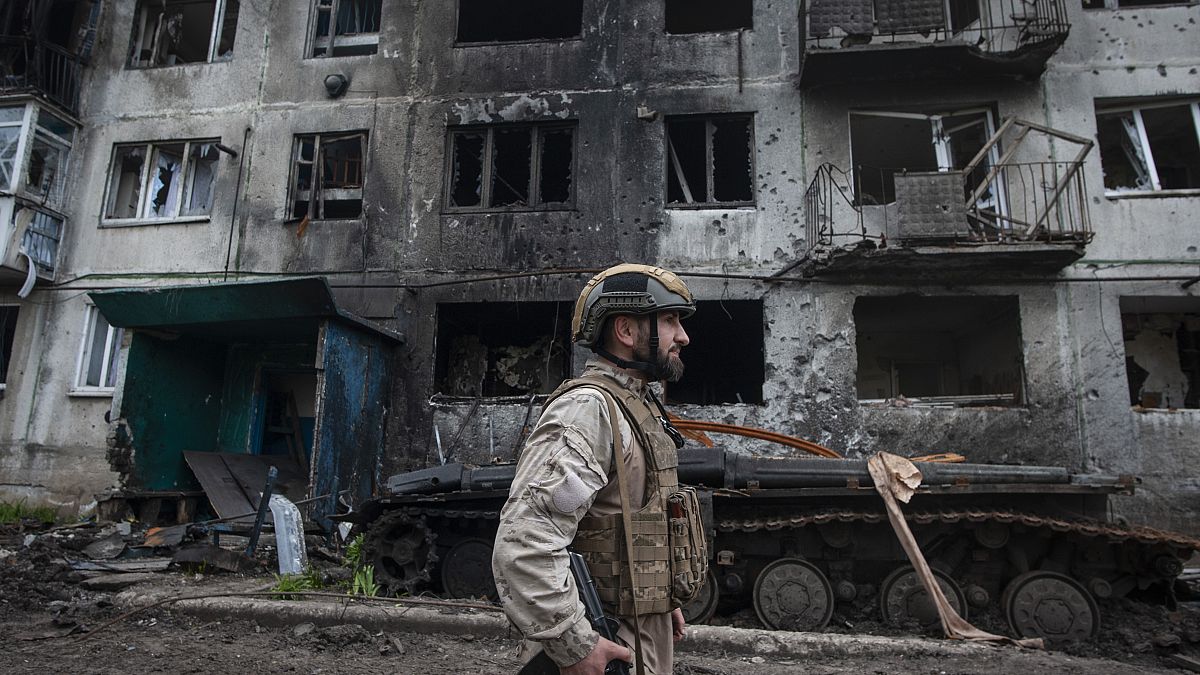Texas
Charred homes, blackened earth after Texas town revisited by destructive wildfire 10 years later
FRITCH, Texas. (AP) — The small town of Fritch is again picking through the rubble of a Texas wildfire, a decade after another destructive blaze burned hundreds of homes and left deep scars in the Panhandle community.
Residents in and around Fritch and other rural towns fled for safety Tuesday afternoon as high winds whipped the flames into residential areas and through cattle ranches.
Fritch Mayor Tom Ray said on Wednesday the town’s northern edge was hit by a devastating wildfire in 2014, while this week’s blaze burned mostly to the south of the town, sparing the residents who live in the heart of the community.
“I said, ‘Oh Lord, please don’t come down the middle,’” Ray said.
The mayor estimated up to 50 homes were destroyed near Fritch, with dozens more reportedly consumed by fire in small towns throughout the Panhandle.
The cluster of blazes included a fire that grew into one of the largest in state history. An 83-year-old grandmother from the tiny town of Stinnett was the lone confirmed fatality. However, authorities have yet to make a thorough search for victims and have warned the damage to some communities is extensive.
The cause of this week’s fires is still unknown but dry, warmer than average conditions combined with high winds caused blazes that sparked to grow exponentially, prompting evacuations across a more than 100 mile (160 kilometer) stretch of small towns and cattle ranches from Fritch east into Oklahoma.
Photos showed homes throughout the area reduced to unrecognizable piles of ash and bricks with charred vehicles and blackened earth.
Cody Benge was a fire captain when a wildfire started about a block from his house on Mother’s Day in 2014 and then tore through Fritch, decimating homes.
Benge, who now lives in Oklahoma, immediately began checking on relatives and friends in Fritch when he heard about this week’s fire.
“I immediately started praying and honestly, it brought back a lot of memories for me and the devastation that I saw,” he said. “I can only imagine what everyone is seeing now.”
Benge battled the 2014 fire for at least 48 hours before he was able to get a break. As in the current fire, a cold front eventually moved over the area and allowed firefighters to gain some control of the blaze.
On Wednesday evening, more than a dozen exhausted-looking volunteer firefighters, many caked with ash and soot, gathered at the Fritch Volunteer Fire Department in the center of town. Residents had dropped off bagged lunches, snacks and bottles of water.
“Today your Fritch Volunteer Fire Department mourns for our community and those around it,” fire officials wrote in a post on Facebook. “We are tired, we are devastated but we will not falter. We will not quit.”
Meghan Mahurin with the Texas A&M Forest Service said they typically rely on heavy equipment to create containment lines around a wildfire, but the fire near Fritch jumped the lines in high winds.
“The wind has just been brutal on us,” she said. “At one point the wind was so high and the flames were so tall that it was just blowing across the highway.”
Lee Quesada, of Fritch, evacuated his residence Tuesday saying the fire got as close as two houses away.
“I haven’t moved so fast since I was like 20,” he said.
His attention then turned to his 83-year-old grandmother Joyce Blankenship, who lived about 21 miles (33 kilometers) away in the town of Stinnett. He posted on a Fritch Facebook community page wondering if anyone knew anything or could check on her.
On Wednesday, he said deputies called his uncle to say they found her remains in her burned home.
“Brings tears to my eyes knowing I’ll never see her again,” Quesada said.
Whether more lives were lost as well as the extent of the damage from the fires wasn’t yet clear on Wednesday, largely because the fires continued to burn and remained uncontained, making complete assessments impossible.
“Damage assessment … is our next priority, after life safety and stopping the growth of these fires,” Nim Kidd, chief of the Texas Division of Emergency Management, said Wednesday, adding that residents should remain alert as conditions favoring fire growth could return later this week.
The Moore County Sheriff’s Office, which encompasses some of Fritch, posted on Facebook Tuesday night that deputies had helped with evacuations.
“We have seen tragedy today and we have seen miracles,” the post said. “Today was a historic event we hope never happens again. The panhandle needs prayers.”
___
Baumann reported from Bellingham, Washington. AP reporter Jeff Martin contributed from Atlanta.

Texas
These 10 buildings define Texas architecture
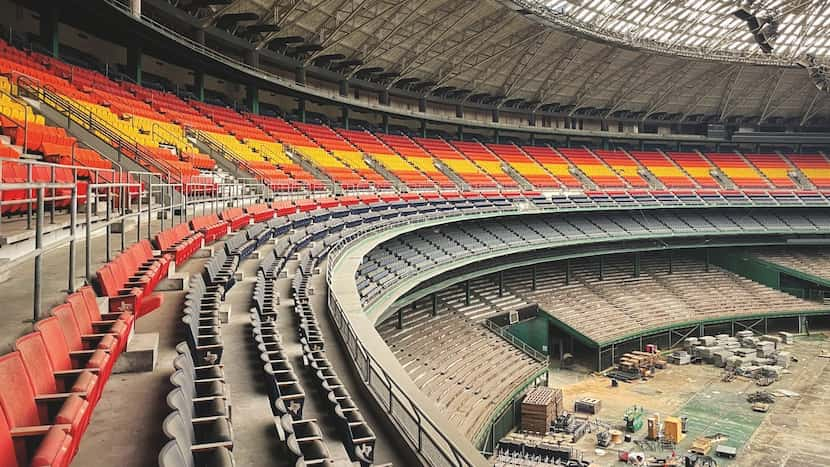
“I am large, I contain multitudes,” wrote Walt Whitman. He was talking about himself, but the words apply equally to the architecture of Texas. I have a substantial library on the subject — monographs, guidebooks, essay collections, scholarly studies, photographic compilations — and not one of those books might be considered definitive. Home, Heat, Money, God: Texas and Modern Architecture (University of Texas Press, $45) gets about as close as any. A chunky, colorful pleasure, it is the work of historian Kathryn E. O’Rourke, who provides the text, and the architect and critic Ben Koush, who supplies the photographs.
Like the state it chronicles, it is sprawling and somewhat unwieldy. The authors describe it as a “partial survey,” which seems about right. It is less a comprehensive history than a critical narrative, one that isolates the various forces that have shaped the state’s architecture from the 1920s to the present. The focus is on those suggested by its wonderful title: the meanings of home, the challenges of climate and the pressures of money and religion. But these are hardly its only themes; an alternate title might have been “Hubris, Highways, Segregation and Demolition.”
“Relentless ambition, a forward-looking attitude, and a strong sense of place combined to make Texans particularly receptive to modern architecture’s implication of newness, its future-oriented image, and its capacity to reinterpret historical forms in novel ways,” O’Rourke writes. “Modern buildings were used repeatedly as signs and symbols of cosmopolitanism and of Texan readiness to take a starring role in any number of dramas.”
O’Rourke’s text, which is thorough and clear-eyed if a bit dry, is buoyed throughout by Koush’s photographs, which balance the clinical perfectionism of a trained architect with a rich sense of humanity.
From Amarillo to Wharton, the authors have traveled across the state, documenting works of all scales and typologies, from grand civic projects to humble roadside attractions.
The book includes more than 20 projects in Dallas, ranging from the moderne icons of Fair Park to the golden neo-modernism of the Campbell Centre. Many of the projects examined here will be familiar, but what makes the book so enjoyable (and an essential component of its argument) are those that are less so. Koush and O’Rourke have an admirable taste not just for the state’s conventionally “important” architecture but also for the vernacular and idiosyncratic.
A few samples follow.
Rosenwald School, West Columbia, 1921
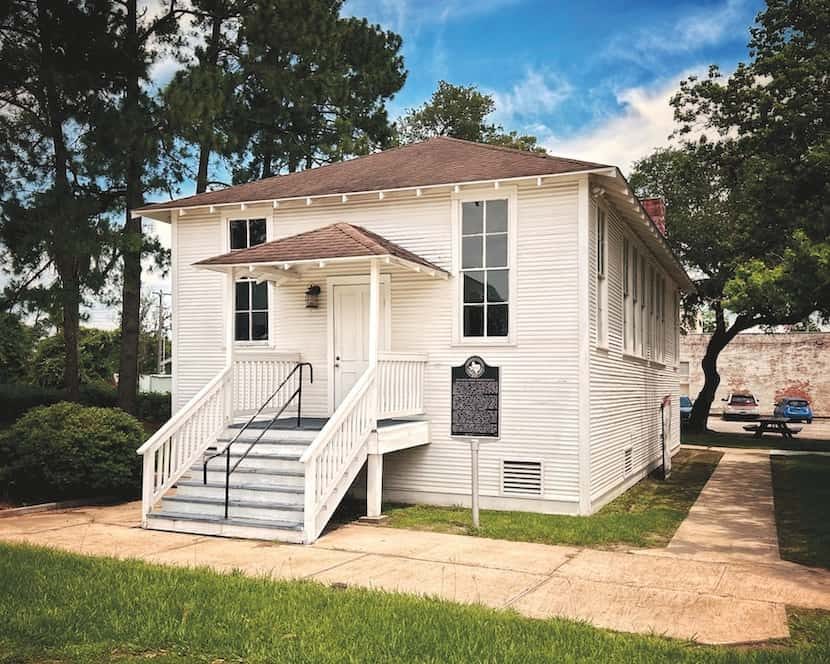
The book begins with the juxtaposition of two schools from the inter-war period; the sprawling Lamar High School, in Houston’s upscale and then race-restricted River Oaks, and this rural Rosenwald School, one of more than 5,000 schools for Black children built in the South and funded in large part by the Jewish philanthropist Julius Rosenwald. “Seen together,” O’Rourke writes, the two schools “lay bare the ways architecture operates within, as well as reflects and often sustains, social and economic structures.”
Kraigher House, Brownsville, 1937
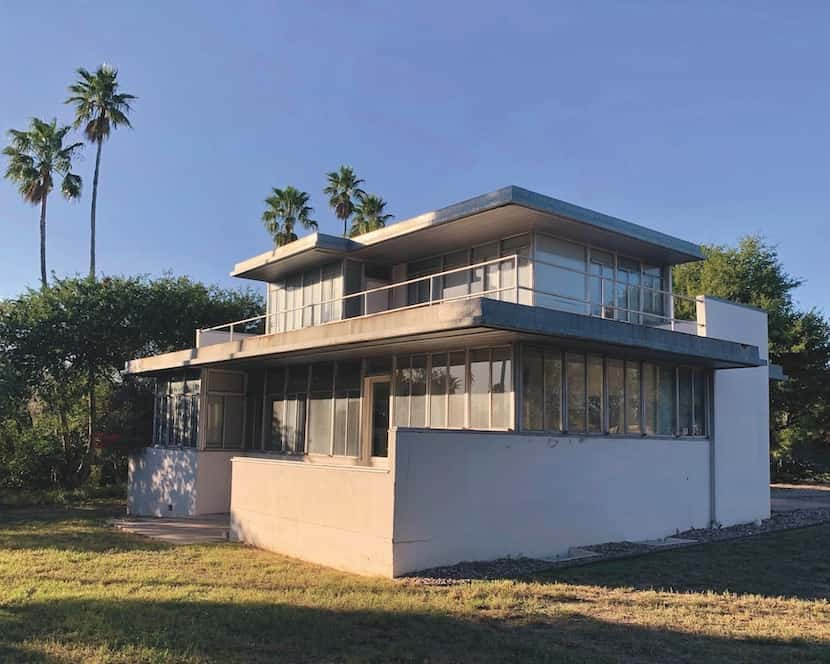
Among the state’s earliest modern houses, and among the first designed by a name-brand European-born modern architect, the Kraigher House was built by Richard Neutra in Brownsville, not normally considered a hotbed of avant-garde design. With its unadorned planar geometry, it is a rare example of the International Style in Texas.
Tee Pee Motel, Wharton, 1947

The authors’ interest in vernacular building is illustrated by this roadside icon of 11 concrete structures modeled on American Indian shelters. The Tee Pee Motel, O’Rourke writes, “typified romantic fascination with indigenous culture on the part of white entrepreneurs.”
The Tap Lounge and Restaurant, El Paso, 1956
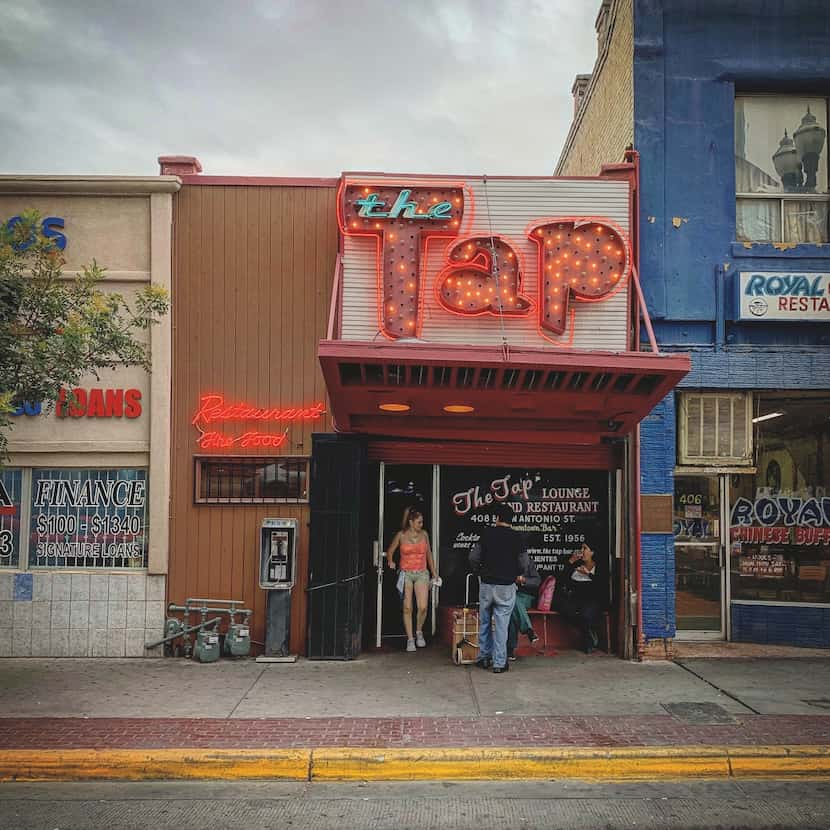
“A case study in the power of neon” this El Paso dive is a joyful exemplar of mid-century Texas commercial architecture.
Cigarroa Medical Building, Laredo, 1960

In the midcentury, Texas architects developed all manner of sun screens, or brises-soleil, as a means of heat mitigation. This distinctive example, with purple tiles on an undulating wall of parabolic arches, was designed by McAllen-based architect Max E. Burkhart Jr.
Zion Lutheran Church, Abilene, 1963
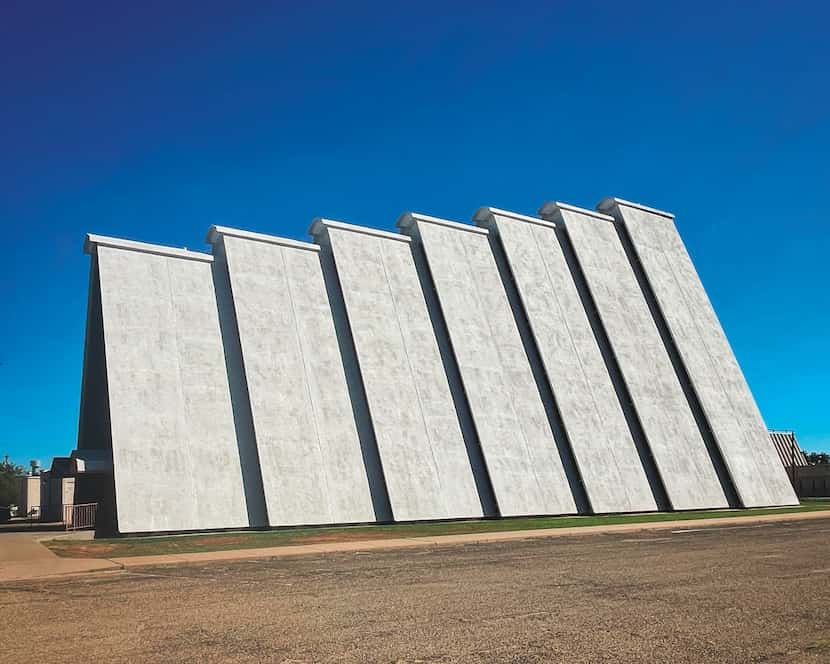
Triangular forms became a staple of ecclesiastical Texas architecture in the 1960s. Outside, the bold geometry commanded attention; inside, the angled shapes suggested the heaven-pointing architecture of Gothic cathedrals. This example, now the Galilee Baptist Church, is a dramatic telescoping A-frame.
Dallas Trade Mart, 1959

Banal on the outside, from within the Dallas Trade Mart is a sky-lit wonder of catwalks and open-air arcades and courts. Built as a wholesale marketing center for developer Trammell Crow by the architects Harwell Hamilton Harris and Harold A. Berry, it “anticipated the new generation of air-conditioned shopping malls just being introduced in Texan suburbs in the early 1960s.”
Martin Luther King Jr. Humanities Center, Houston, 1969
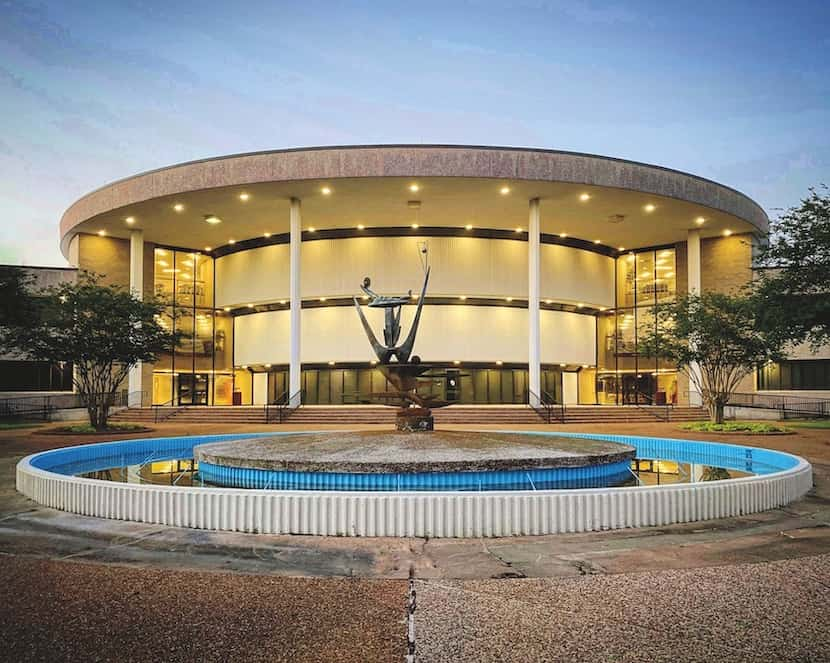
The King Humanities Center at Texas Southern University, defined by its swooping, semi-circular front portico, was the work of John S. Chase, the first African American man to receive an architectural degree from the University of Texas and the first to become a registered architect in the state.
Carnegie Branch Library, Houston, 1982
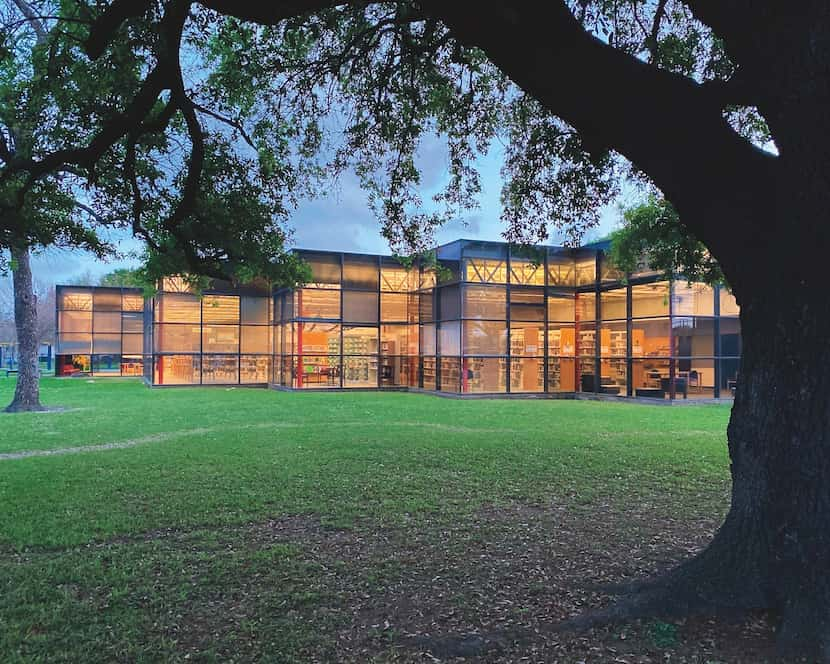
This elegant and technically sophisticated high-modern library, designed by Ray Bailey Architects, features glazed walls and an exposed structural truss system, recalling earlier Houston works by Ludwig Mies van der Rohe and Philip Johnson.
Texas
Video: Floodwaters Inundate Texas

new video loaded: Floodwaters Inundate Texas
transcript
transcript
Floodwaters Inundate Texas
Residents in parts of Southeast Texas waded through waist-high water as rescue efforts were underway.
-
Rescue worker: “We all right here?” OK, you good? Yeah.
Recent episodes in Extreme Weather
Texas
South Texas Storm Chances continue the evening
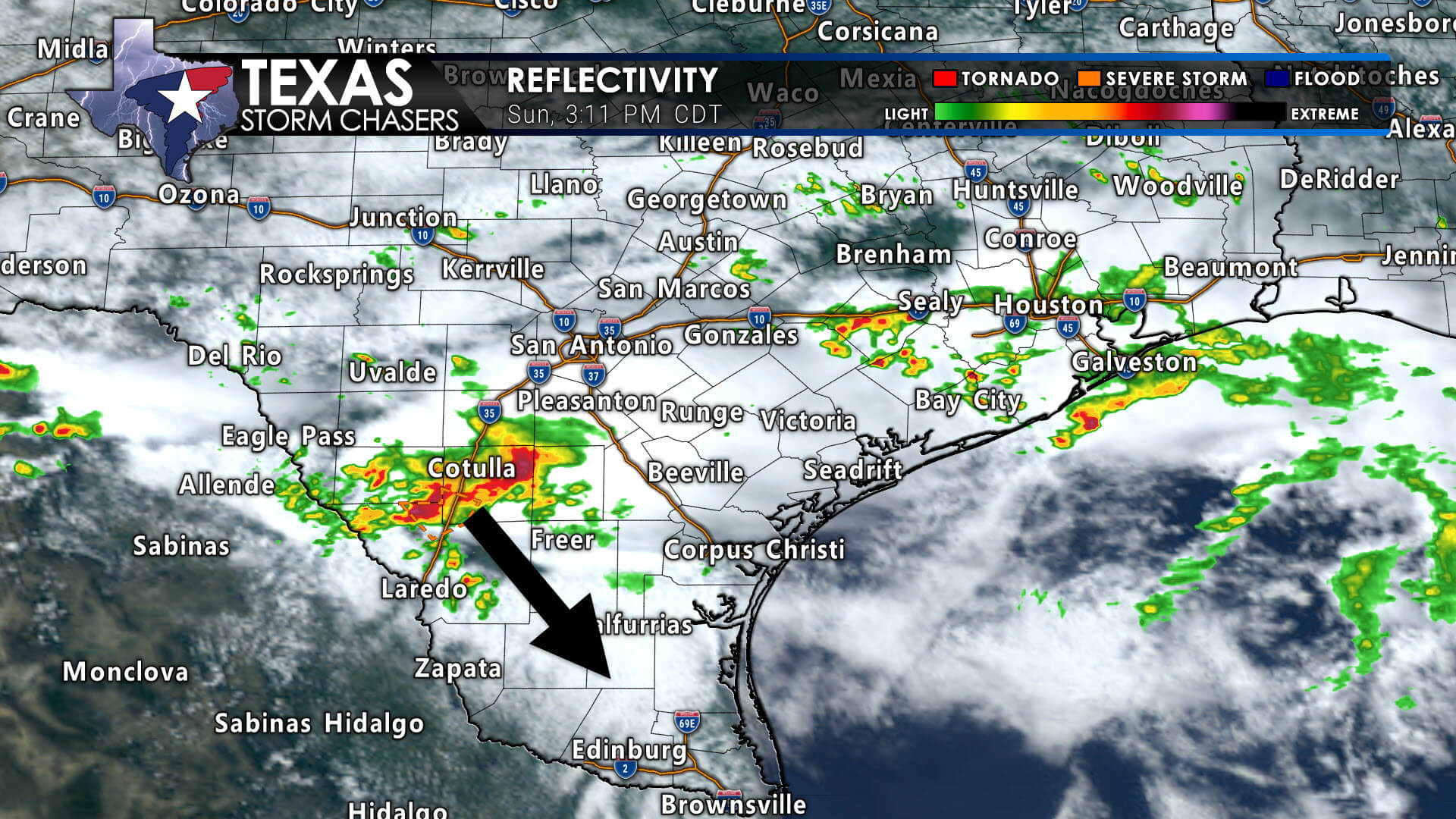
This is a weather radar image of south Texas taken at 3:11 PM. Scattered storms continue moving east/southeast across South-Central Texas, the Coastal Bend, and Southeast Texas.
Scattered thunderstorms are possible this afternoon across the southern Edwards Plateau, South-Central Texas, east into the Coastal Plains, and Southeast Texas. Most individual storms will move east/southeast through the evening hours. Some storms may be strong to severe with large hail, localized damaging winds, and a non-zero risk of a spinup tornado. Nearly constant cloud-to-ground lightning, along with heavy rainfall, is a guarantee for any thunderstorm.
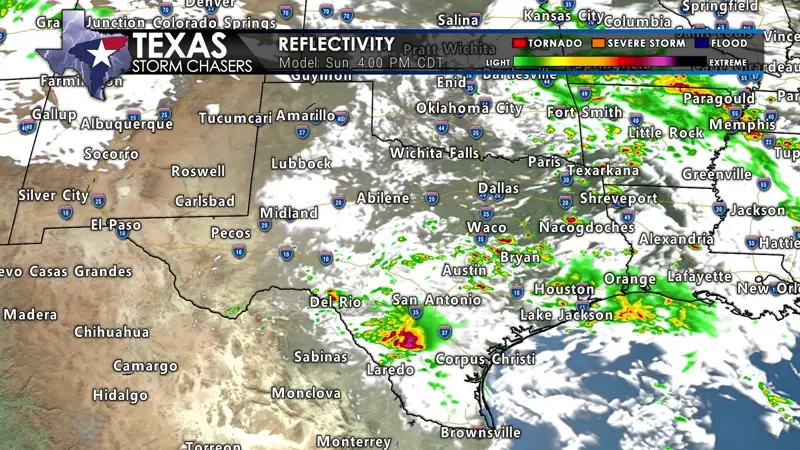
Click the ? or static image for a full animated version. Simulated weather model radar this afternoon through Monday morning from the High-Resolution Rapid Refresh (HRRR).
As we continue into tonight, thunderstorms will weaken and start to die down across the southern portions of the state. Into Monday morning, we will feature southerly winds, bringing a tropical-like environment north across the eastern seventy-five percent of Texas. That environment will continue advancing north into Oklahoma and Kansas. Spotty showers, drizzle, and low clouds will be widespread tonight.
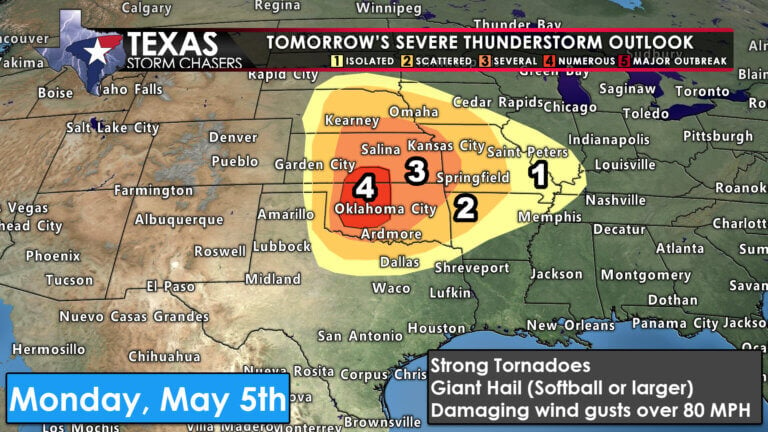
Monday afternoon through Monday night will bring a severe weather outbreak to Oklahoma and Kansas. Northern portions of Texas are on the southern edge of the risk, where we may see one or two storms fire up during Monday’s evening hours. If any storms do manage to develop, they would likely become severe with a threat of destructive hail and localized damaging winds. The most likely outcome is that storms remain north of the Red River. Most of Texas should remain thunderstorm-free on Monday.
-

 Politics1 week ago
Politics1 week agoColumbia University’s policy-making senate votes for resolution calling to investigate school’s leadership
-

 News1 week ago
News1 week agoBoth sides prepare as Florida's six-week abortion ban is set to take effect Wednesday
-

 World1 week ago
World1 week agoBrussels, my love? MEPs check out of Strasbourg after 5 eventful years
-

 News1 week ago
News1 week agoPro-Palestinian campus protesters face looming deadlines and risk of arrest
-

 Politics1 week ago
Politics1 week agoHouse Republicans brace for spring legislative sprint with one less GOP vote
-

 Politics1 week ago
Politics1 week agoRepublican makes major announcement in push to grow GOP support from once-solid Dem voting bloc
-

 Politics1 week ago
Politics1 week agoGOP Rep. Bill Posey won't seek re-election, endorses former Florida Senate President as replacement
-

 World1 week ago
World1 week agoAt least four dead in US after dozens of tornadoes rip through Oklahoma
















